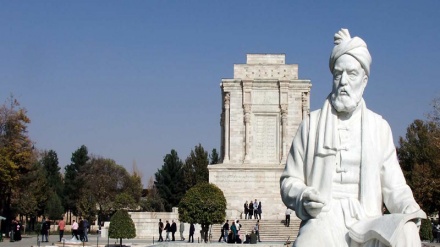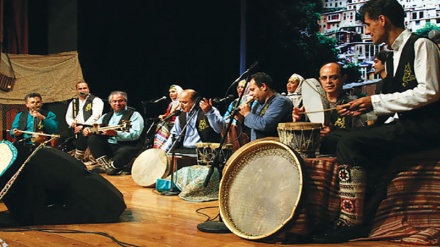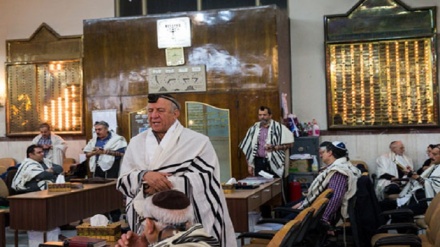Iran: Land of various ethnicities (13)
In this episode we are going to introduce to you some of the features of the people in Sistan-Baluchestan.
Sistan-Baluchestan province, located in southeast of Iran, shares borders with Pakistan and Afghanistan. This province is built up of two regions: Sistan and Baluchestan; hence the naming of it. These two regions are naturally different from each other.
Sistan has been one of the primary centers of Iranian civilization. Baluchestan, also, was known as Moka in the old texts. Later on it was called Makran. Sistan, especially the ancient Shahr-e Sukhteh (Burnt City) was the nexus of great civilizations of Transoxiana, Mesopotamia, India and China. The Burnt City is located between Zabol in Sistan and Zahedan in Baluchestan. Approximately 700-800 kinds of fabrics have been found in this ancient city. These fabrics contain coarse and fine cotton materials. They have been preserved due to the climate of the Burnt City.
The recent findings in the graves of this area show that the women of the Burnt City used to wear dresses like the Indian Sari and were fond of jewelry and cosmetics. In these graves one can see kohl, kohl containers and combs. The handicrafts of Sistan-Baluchestan province are of great significance as they help create jobs and make money. Most of these handicrafts are made by rural women and girls especially in winter. These include needlework, rug weaving, coin sewing, straw weaving, pottery, jewelry, woodcutting, gilim weaving, silk work, traditional textile and making musical instruments.
Each of these arts has an especial status among the people of the region.
All ethnicities of Sistan-Baluchestan province with their customs and traditions and nomadic life have added the beauties of the region. However, some of the traditions and ceremonies are observed more seriously. Among these ceremonies mention can be made of Eid al-Adha, Eid al-Fitr and Nowruz. These events are held gloriously with music and wood dance. The feast of harvest is also held in some areas. In the mourning ceremonies, also, the relatives come to the house of the bereaved family for expressing their condolences.
As for the clothes of men, they wear long shirts and loose trousers and most of them have a turban. However, women of Sistan-Baluchestan wear long dresses with needlework, silk and wirework. They also put on embroidered chadors.
Since the people of this province are interested in animal husbandry and agriculture they engage in these two activities besides other jobs and occupations.
The music of Sistan-Baluchestan is considered among the arts of this region. It indicates different events including sad and happy ones. The musical instruments of this province include qichak (double-chambered bowl lute), rabab (a stringed lute-like instrument), banjo, tamburak (long-necked stringed instrument resembling a small tambur), doholak (small dohol), and two percussion instruments called tasht and kuzeh. Dohol and Sorna are also common in this province especially in Sistan section. The latter two instruments are often used in wedding ceremonies and festivities. The music of Sistan-Baluchestan region is divided in different categories including combat music, mystic music, and joyful music and so on. Each category implies grief, joy, epic, sacrifice, piety, sympathy, fidelity, patriotism, hospitality, etc.
Sistan-Baluchestan is home to Sistani dialect and Baluchi language. Sistani dialect is affiliated to the southern branch of western Iranian languages. Late Dr. Mohammad Mo’in in the introduction to Borhan-e Qate’ dictionary writes that other two dialects of the region, namely Sagzi and Zavoli are subdivisions of Iranian languages. Sistani is spoken in Sistan region of Iran, Nimruz and Farah regions of Afghanistan, Turkmenistan, Sarakhs and Gorgan Plain of Iran. This dialect on the one hand is akin to the current and old Khorasani dialect and the dead dialects of Transoxiana and Tajikistan; and on the other hand it shares many words with Baluchi language.
As for the Baluchi language, it enjoys close bonds with the Pahlavi language of Ashkanid era and the Pahlavi language of early Sassanid era. This language has remained almost intact thanks to the tough climate of the region and difficulty of commutation. This language is divided into the northern (Sarhadi) and southern (Makrani) dialects. The northern branch is mostly spoken in Zahedan, Khash and Sistan; but the southern one is common mainly in Iranshahr, Saravan, Sarbaz and Chabahar. The two dialects differ in pronunciation and intonation. While the former has an Iranian tone and pronunciation the latter is more akin to the pronunciation of Sindh and Multan.
Prior to the arrival of Islam in the region, there were various creeds such as Manichean, Mithraism, Zoroastrianism, Judaism and Christianity. The people of this province are Muslims. However, those living in Sistan region are Twelver Shias while the people of Baluchestan are Sunni Muslims of Hanafi denomination.
RM/ME


